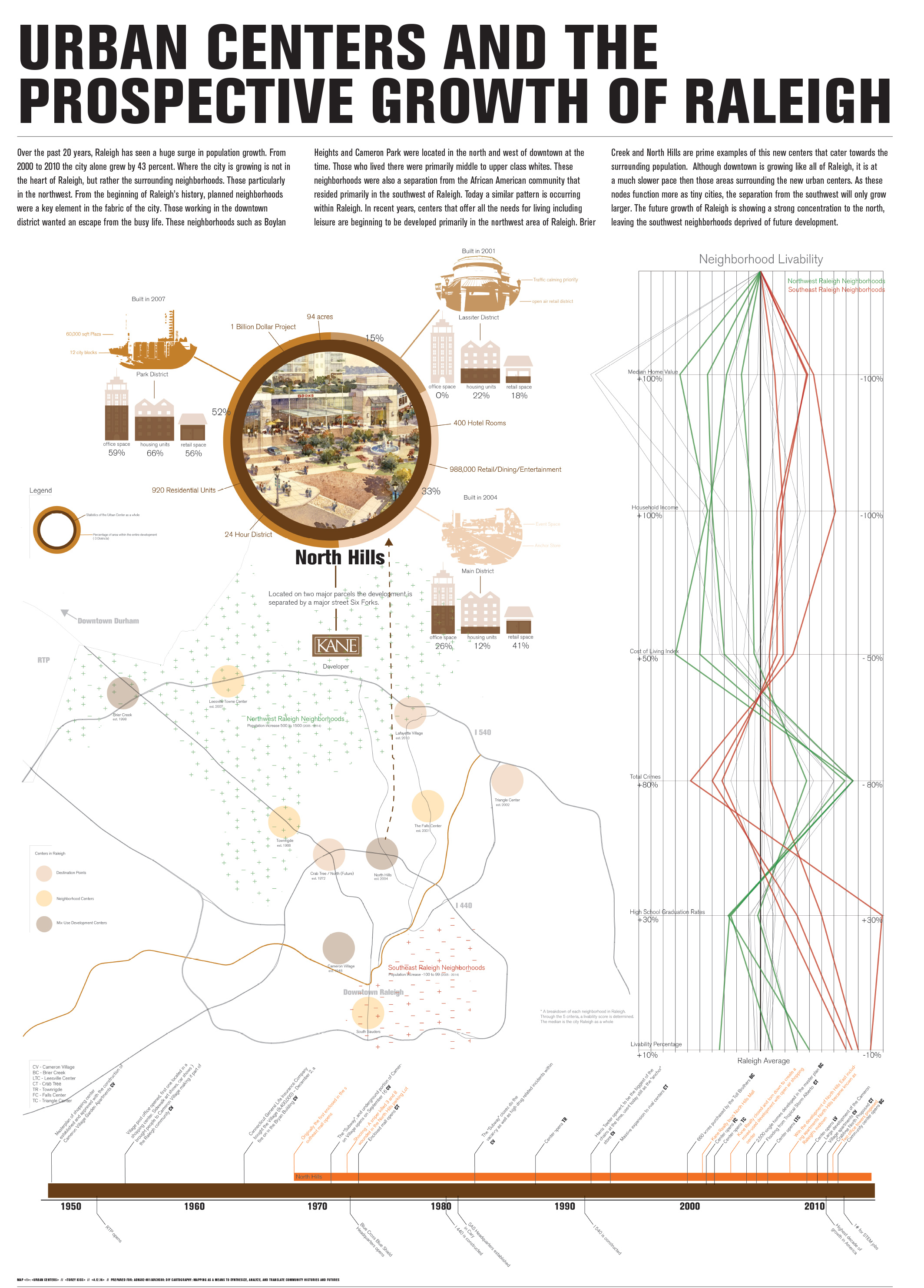 URBAN CENTERS AND THE PROSPECTIVE GROWTH OF RALEIGH
URBAN CENTERS AND THE PROSPECTIVE GROWTH OF RALEIGH
Over the past 20 years, Raleigh has seen a huge surge in population growth. From 2000 to 2010 the city alone grew by 43 percent. The growth, however, did not take place in the heart of Raleigh, but rather in the surrounding neighborhoods – those particularly to the northwest of the city.
From the beginning of Raleigh’s history, planned neighborhoods were a key element in the fabric of the city. Those working in the downtown district wanted an escape from the busy life and resided in neighborhoods such as Boylan Heights and Cameron Park, which were located to the north and west of downtown at the time. Primarily comprised of middle to upper class whites, these neighborhoods were also a separation from the African American community that resided primarily in the southwest Raleigh.
Today, a similar pattern is occurring within Raleigh. In recent years, centers that offer all the needs for living including leisure are being developed primarily in the northwest area of Raleigh. Brier Creek and North Hills are prime examples of this new type of center that caters to its surrounding population. Although downtown Raleigh continues to grow, it is at a much slower pace than those areas surrounding the new urban centers. As these nodes function more as tiny cities, the separation from the southwest grows larger. The prospective growth of Raleigh indicates a strong future concentration to the north, leaving the southwest neighborhoods deprived of future development.